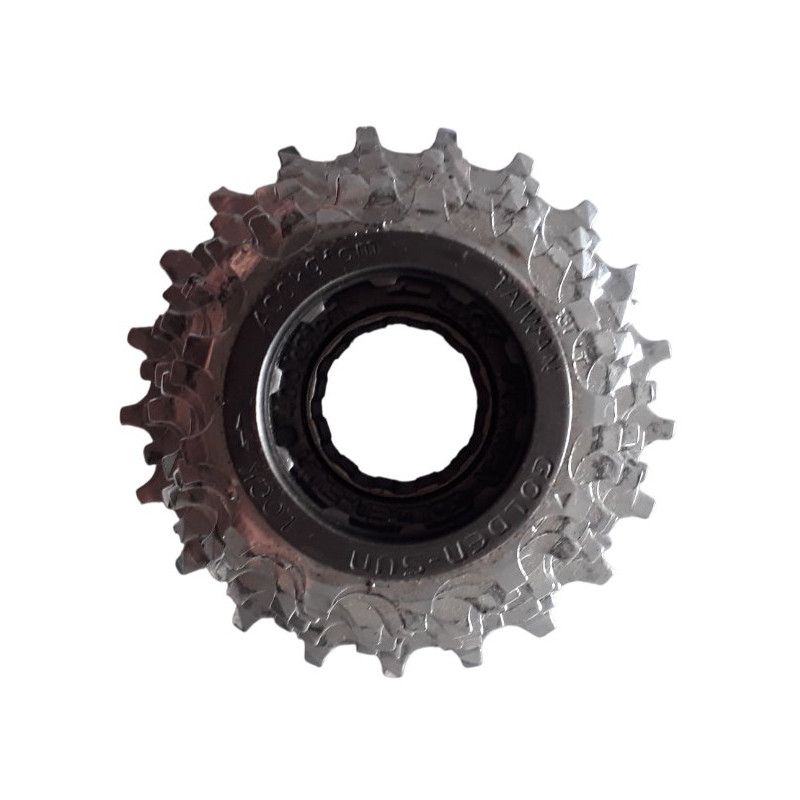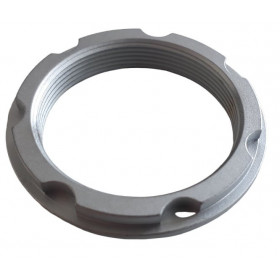 zoom_in
zoom_in
Freewheel 8 speed
- 1 Item
- Used
€10.99 VAT included
8-speed freewheel: everything you need to know about this key drivetrain component
The 8-speed freewheel remains a popular choice among cyclists, especially for touring bikes, entry- to mid-level mountain bikes, and reliable city bikes. Easy to maintain and compatible with many drivetrain setups, it's a simple and effective solution for equipping or refurbishing a bicycle.
What is an 8-speed freewheel ?
The freewheel is a crucial part of a bicycle’s drivetrain. It mounts on the rear wheel hub and allows the wheel to spin freely when the rider stops pedaling. This mechanism—known as the freewheel system—enables coasting, especially useful when going downhill or during rest phases.
An 8-speed freewheel consists of 8 sprockets mounted in a single unit that screws directly onto a threaded rear hub. It differs from a cassette, which requires a specific splined freehub body and lockring system.
Technical specifications of an 8-speed freewheel
Here are the main features of a typical screw-on 8-speed freewheel:
-
Gear range: 8 speeds, offering a good spread for climbing and flat terrain.
-
Compatibility: suitable for drivetrains with 8-speed indexed rear derailleurs (e.g., Shimano, Sunrace).
-
Mounting: screws onto a standard threaded hub (BSA 1.37x24).
-
Hub spacing: typically designed for 135 mm rear dropout spacing—common on mountain and trekking bikes.
-
Gear ratios: commonly ranges from 13 to 34 teeth, with wider options available for MTB or touring use.
-
Weight: slightly heavier than a cassette, due to its one-piece construction.
Why choose an 8-Speed freewheel ?
There are several advantages to choosing an 8-speed freewheel:
-
Easy to install: no need for a splined freehub—just screw it on.
-
Simple maintenance: easy to replace when worn, using a standard freewheel remover tool.
-
Wide compatibility: ideal for older bikes or basic models without cassette hubs.
-
Cost-effective: an economical way to refresh your drivetrain.
Freewheel vs. cassette: what’s the difference ?
Although they serve a similar function, freewheels and cassettes have different technical requirements:
| Feature | 8-Speed Freewheel | 8-Speed Cassette |
|---|---|---|
| Mounting | Screws onto threaded hub | Slides onto splined freehub |
| Maintenance | Simple, but hubs less durable | Stronger, more modern hub system |
| Usage | Older or entry-level bikes | Modern bikes |
| Weight | Generally heavier | Lighter and modular |
When should you replace your freewheel ?
Signs of worn sprockets include rough gear shifting, chain skipping, or noisy transmission. If you notice these symptoms, it may be time to replace your 8-speed freewheel. Be sure to also check the chain condition, as a worn chain can accelerate sprocket wear.
In summary
The 8-speed freewheel is a reliable and accessible solution for riders looking for a straightforward, durable drivetrain. Whether you're riding a leisure bike, a refurbished MTB, or a commuter setup, it offers dependable 8-speed performance without complex installation.
If you're looking to breathe new life into your bike or simply need to replace a worn-out component, an 8-speed screw-on freewheel is a smart and budget-friendly option.




